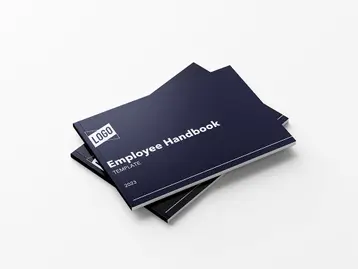Everything You Need to Know About Employee Leave of Absence

Table of contents
- 1.What is a leave of absence?
- 2.When can employees take leave for personal reasons?
- 3.How long can you take a leave of absence?
- 4.How do I create a leave of absence request policy?
Requests for employee leave of absence can get complicated. And in light of COVID-19, more options have opened up for employees when it comes to paid leave. However, staying on top of leave regulation can help your business fend off noncompliance issues down the road. Generally, a private company with over 50 employees and all public organizations must provide unpaid leave under the Family and Medical Leave Act (FMLA). While it’s ideal to have company, federal, and state policies regarding leave of absence detailed in your employee handbook, you may have to review the qualifications from time to time.
What is a leave of absence?
Unlike paid time off, which includes vacation and sick days, a leave of absence is an option for employees dealing with unusual circumstances — such as a serious medical emergency or a new child. A leave of absence can be mandatory or voluntary, paid or unpaid. Federal and state governments regulate mandatory leaves through the Family and Medical Leave Act, the American Disabilities Act, and now the Emergency Family and Medical Leave Act (EFMLA). These laws ensure that your employee will have job protection while on leave. There are many reasons that an employee may request a leave of absence according to the FMLA. This includes:
- Childbirth, adoption, or foster care
- A serious health condition
- Caring for a family member
- Military reasons
While mandatory leaves are required by law, voluntary unpaid leaves are completely up to employer discretion and do not offer job protection to their employees. Employers often grant voluntary leaves during special circumstances if an employee doesn’t qualify for a mandatory leave or has already used up all their sick days.
While mandatory leaves are required by law, voluntary unpaid leaves are completely up to employer discretion and do not offer job protection to their employees.
An employee who requests to take leave under FMLA or EFMLA will not be using their sick days or vacation days. Generally, all PTO should be used before an employee requests for unpaid leave under FMLA. The FMLA also doesn’t require that employers pay their employees during their leave of absence, although they may do so.
When can employees take leave for personal reasons?
Sometimes an employee will need some time off that the FMLA doesn't cover. These typically are related to life milestones — such as marriages, graduations, funerals, or an unexpected family emergency. However, some employees may seek to use personal leave for travel, study, or to pursue a passion project. In some cases, this may take the form of a sabbatical leave, allowing employees to step away from work for an extended period to focus on personal or professional growth. Since these situations fall under PTO or even unpaid leave, employers have complete discretion of whether to accept the request or not. When evaluating a leave request for personal reasons, even if it’s unpaid, it’s important to consider the benefits the employee may bring back on the job from their leave — as well as the cost of replacing them. Events like marriages and funerals may bring your employee closure and better focus once they return to work, and leaves that involve travel or personal projects can turn into new skills that your employee can use at work. In general, it would be best to have employees use their vacation days or PTO for such events, if possible, rather than taking unpaid leave
How long can you take a leave of absence?
Under the EFMLA, employees may take leave in order to recover from COVID-19 or take care of a family member who has the virus.
According to the FMLA, your employees can take up to 12 weeks off in a 12-month period if they have already worked for 1,250 hours. Under the EFMLA, your employee only needs to have worked 30 days before being eligible.
Under the EFMLA, employees may take leave in order to recover from COVID-19 or take care of a family member who has the virus. If your employee isn’t covered by FMLA or EFMLA, or they plan to take a voluntary leave, the length of time an employee can take off is up to the employer.How do I create a leave of absence request policy?
Employees will need to send a form from the United States Department of Labor to their employer in order to request a leave of absence under FMLA. Once an employee submits their official request, you should file a copy of their letter in their personal file to maintain compliance. If they plan to file their request under FMLA, employees should ideally give their employers 30-day notice, unless the reason for their leave was unexpected. To help employees correctly request a leave, you should add your policies regarding leaves of absence to your employee handbook. Pro tip: TriNet offers an all-in-one solution to manage leave of absence requests. Even if your employee doesn’t intend to take a leave under FMLA, they should still let you know in writing through a letter including the following:
- A request for leave
- The date they expect to leave
- The date they plan to return
- An offer to provide assistance
- A thank you for consideration
Once an employee submits their official request, you should file a copy of their letter in their personal file to maintain compliance. If they plan to file their request under FMLA, employees should ideally give their employers 30-day notice, unless the reason for their leave was unexpected.
This article is for informational purposes only, is not legal, tax or accounting advice, and is not an offer to sell, buy or procure insurance. TriNet is the single-employer sponsor of all its benefit plans, which does not include voluntary benefits that are not ERISA-covered group health insurance plans and enrollment is voluntary. Official plan documents always control and TriNet reserves the right to amend the benefit plans or change the offerings and deadlines.
This article may contain hyperlinks to websites operated by parties other than TriNet. Such hyperlinks are provided for reference only. TriNet does not control such web sites and is not responsible for their content. Inclusion of such hyperlinks on TriNet.com does not necessarily imply any endorsement of the material on such websites or association with their operators.

Kelsey Rae Banerjee
Table of contents
- 1.What is a leave of absence?
- 2.When can employees take leave for personal reasons?
- 3.How long can you take a leave of absence?
- 4.How do I create a leave of absence request policy?





